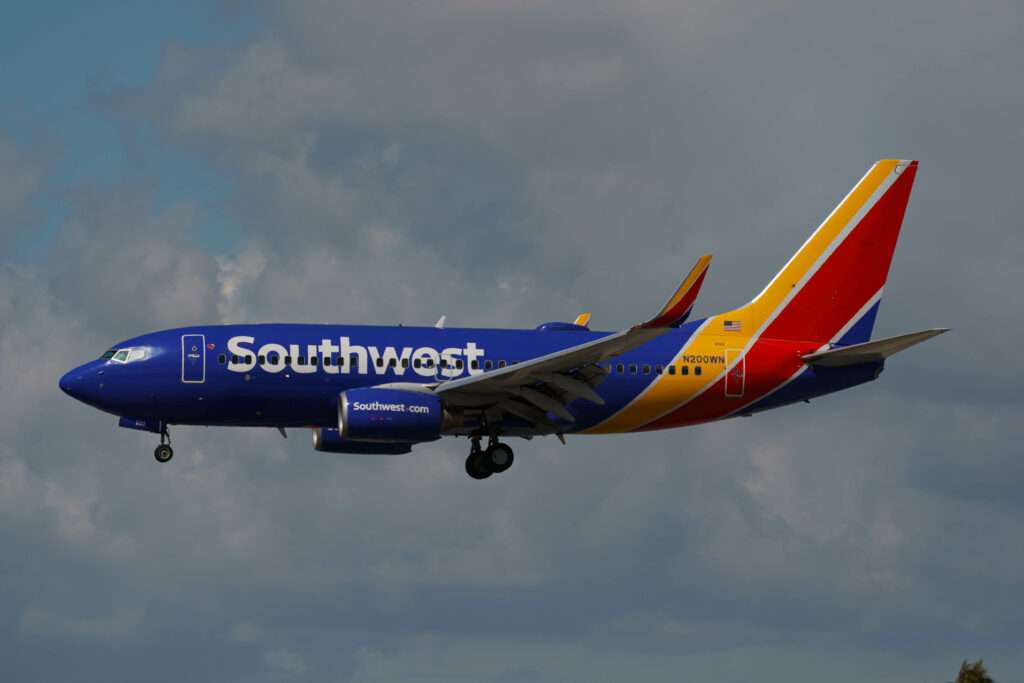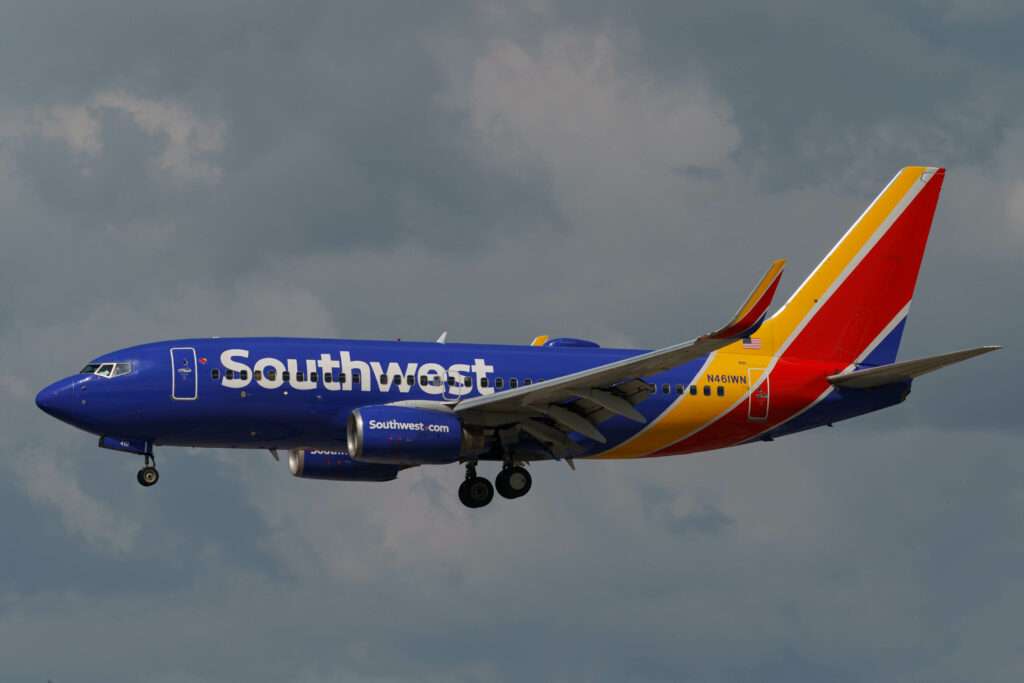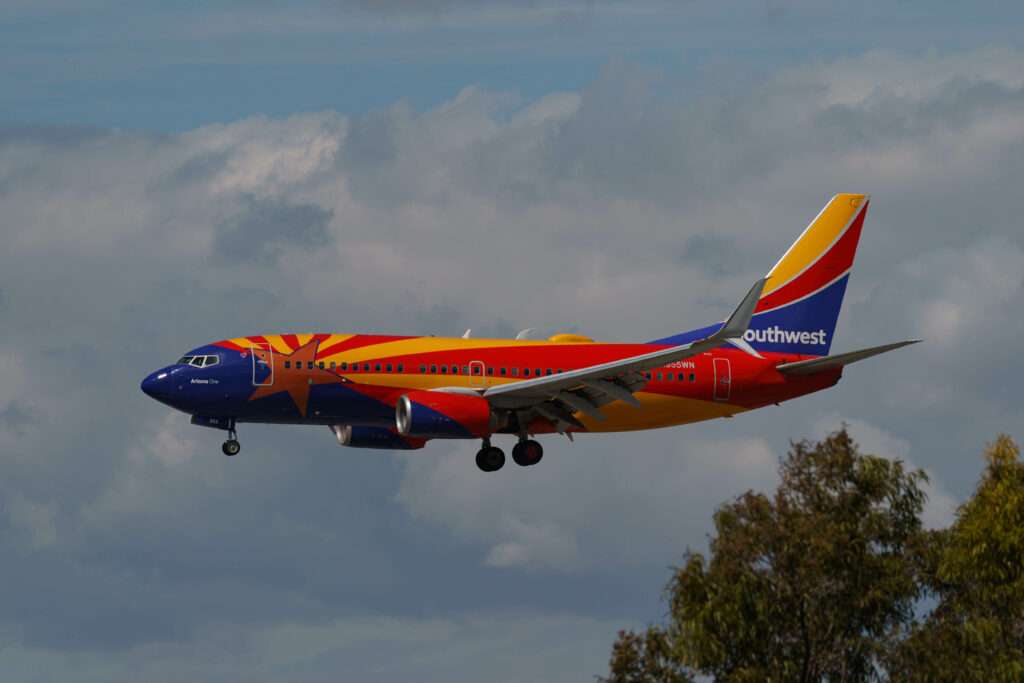Southwest Airlines, known for its cheerful attitude, low fares, and iconic heart logo, has revolutionized air travel in the United States.
But the story of Southwest isn’t just about catchy slogans and quirky flight attendant routines.
It’s a tale of innovation, calculated risk, and a commitment to a unique business model that democratized the skies.
Humble Beginnings: A Texas Triangle Takes Off (1967-1979)
The journey began in 1967, not in a corporate boardroom but over a San Antonio bar napkin.
Rollin King, a businessman with a vision of affordable air travel within Texas, sketched a triangle connecting Dallas, Houston, and San Antonio.
Herb Kelleher, a lawyer soon to become Southwest’s legendary CEO, brought legal muscle to the table.
Their strategy?

Exploit a loophole in federal regulations that exempted intrastate airlines from strict control.
The nascent airline, initially called Air Southwest, faced fierce opposition from established carriers worried about the upstart’s disruptive pricing plans.
Legal battles ensued, delaying Southwest’s takeoff for several years.
Finally, in 1971, after tweaking their strategy to operate solely within Texas, Southwest, with its now-famous name, took to the skies with three Boeing 737s.
Southwest‘s early success stemmed from several key decisions.
They adopted a single-aircraft type, the Boeing 737, for efficiency and pilot training ease.
They embraced a “point-to-point” network, bypassing congested hubs and offering more direct flights for passengers.
And most importantly, they kept their fares low by focusing on quick turnarounds, a friendly but no-frills service model, and a dedicated workforce.
Deregulation and National Expansion (1979-1990s)
The late 1970s marked a turning point for Southwest.
The Airline Deregulation Act of 1978 loosened the government’s grip on the industry, allowing Southwest to expand beyond Texas.

Seizing the opportunity, the airline embarked on a strategic growth phase, entering new markets and challenging established carriers.
Southwest’s culture, fostering a sense of fun and employee ownership, became a differentiator.
Flight attendants, known as “Southwest Airlines Hospitality Professionals,” were encouraged to add a touch of humor to their routines, while profit-sharing plans instilled a sense of ownership among employees.
This unique approach fostered a loyal customer base who appreciated the airline’s friendly service and focus on value.
Furthermore, the 1980s and 1990s saw Southwest’s continued rise.
They weathered industry downturns and even launched the first-ever airline website in 1995, a testament to their commitment to innovation.
By the late 1990s, Southwest had become the undisputed leader in domestic passenger traffic.
This was a remarkable feat for a company that started with a single napkin sketch.
Navigating Challenges and Merging Forward (2000s-Present)
The new millennium brought its share of challenges.
The 9/11 attacks and rising fuel costs impacted the entire airline industry.

Southwest, however, remained profitable due to its strong balance sheet and efficient operations.
In 2011, Southwest made a bold move by merging with AirTran Airways, a low-cost carrier with a focus on East Coast markets.
This expanded Southwest’s network and solidified its position as the world’s largest low-cost carrier.
More recently, Southwest has faced competition from other budget airlines and occasional operational disruptions.
However, the airline has continued to invest in its fleet, upgrade technology, and maintain its core principles of low fares and friendly service.
Looking to the Future: A Legacy of Innovation
Overall, Southwest Airlines’ story is one of defying the odds.
From its clever regulatory workaround to its unwavering commitment to a unique business model, the airline has consistently challenged the status quo.
The company’s success has undoubtedly benefited consumers by driving down airfares and making air travel more accessible.
As Southwest navigates the ever-changing aviation landscape, its core values – a strong company culture, operational efficiency, and a focus on customer satisfaction – will likely remain its guiding principles.
With its commitment to innovation and its loyal following, Southwest Airlines is well-positioned to continue soaring high for many years to come.

Click the banner to subscribe to our weekly newsleter.

Click the photo to join our WhatsApp channel so then you can stay up to date with everything going on in the aviation industry!









